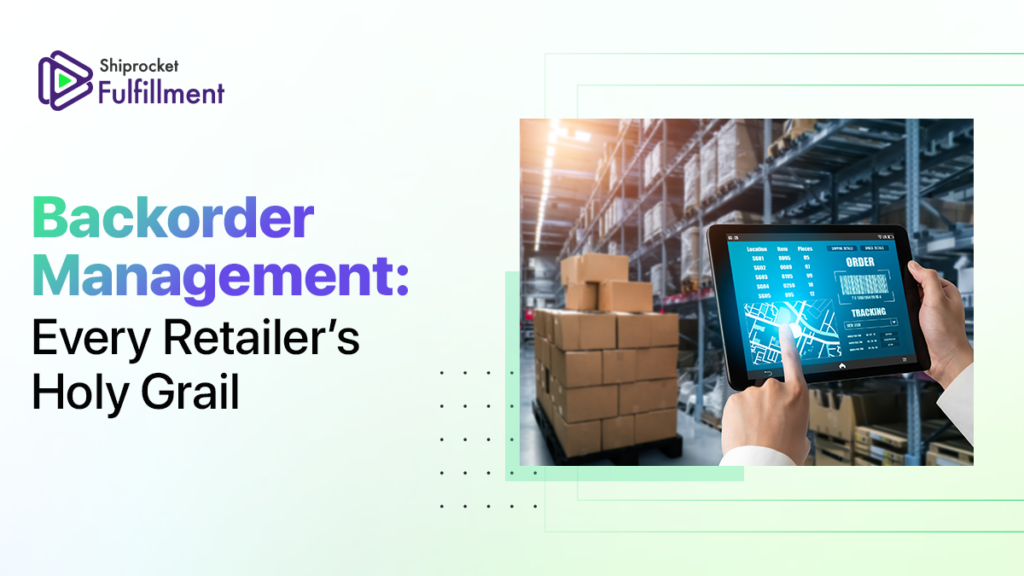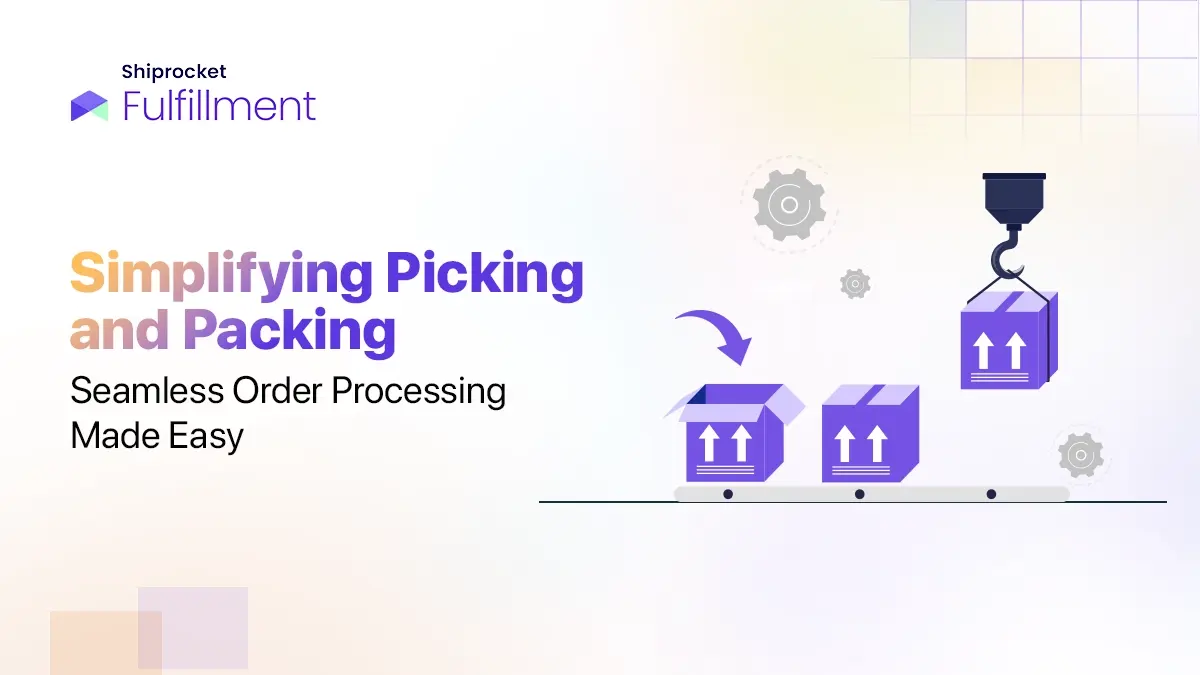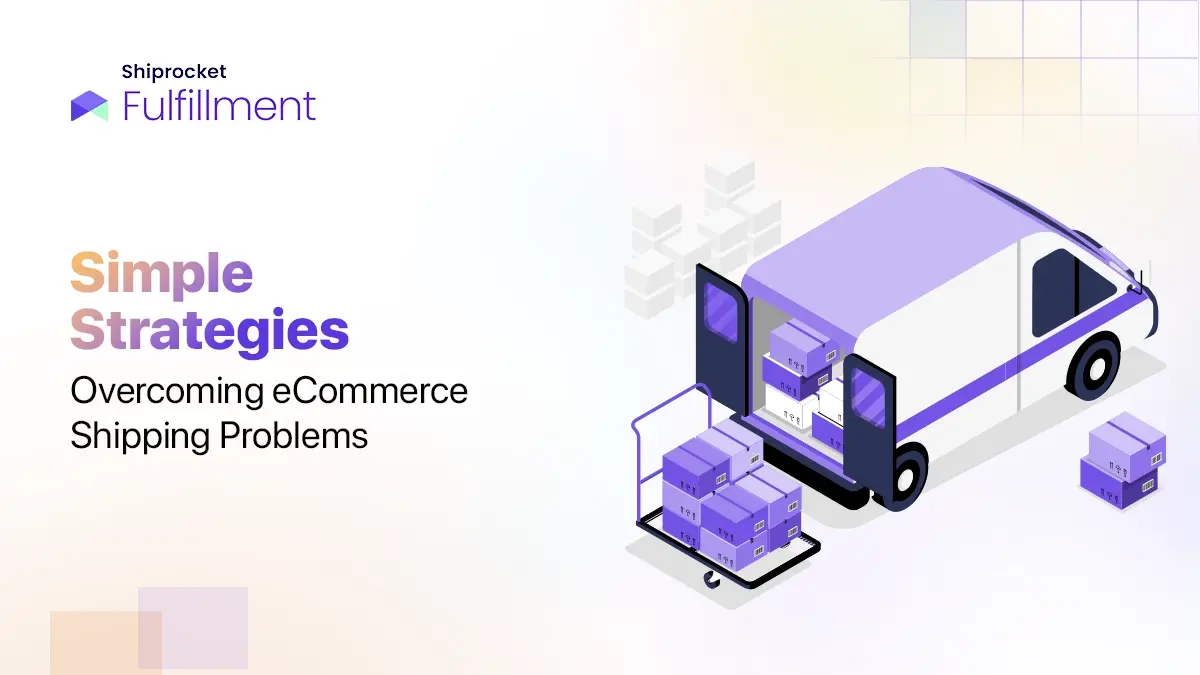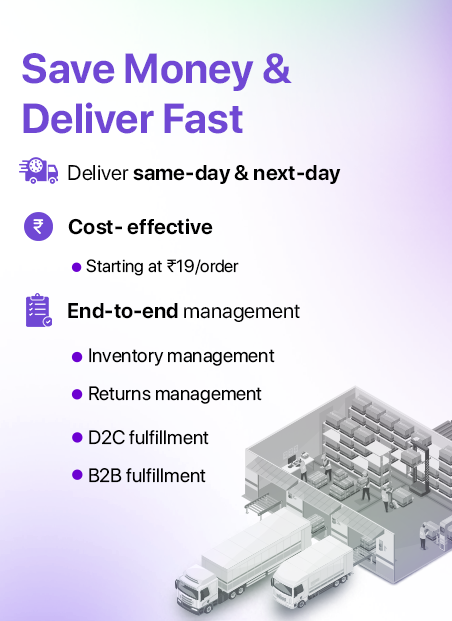- Introduction
- Understanding Backorders
- Implementing Efficient Backorder Systems
- How to Account for Backorders
- Streamlining Backorder Fulfillment
- Pros and Cons of Utilising Backorders
- Optimal Strategies for Backorder Management
- Tactics for Minimising Backorders
- Enhancing Customer Service during Backorder Situations
- Conclusion
- Frequently Asked Questions(FAQs)
Introduction
If you want to meet your customers’ expectations and avoid losing sales to competitors, you know the importance of having the right products in stock at the right time. However, as a retailer, you have to experience some unplanned events. You may face unexpected demand spikes, production delays, or supply chain disruptions, leading to running out of inventory. What do you do then? Naturally, you wouldn’t stop taking orders, nor would you accept orders and promise them to deliver later when the products are available.
Here’s where backorder management comes in. Backorder management involves handling orders that cannot be fulfilled immediately due to insufficient inventory. It handles tracking and managing outstanding orders and communicating with customers about the status of their orders. It also prioritises the fulfillment of backorders to minimise any negative impact on your business. It also helps retain your customers, reduce inventory costs, increase sales, and improve customer experience.
Let’s explore the concept of backorders in detail.

Understanding Backorders
A backorder refers to an order of a product you can’t immediately fulfill because you don’t have enough products in stock. However, you promise to ship the product to the customer immediately since you expect to receive more inventory from the manufacturer or supplier soon.
Backorders are caused by several reasons, particularly due to an imbalance in the demand and supply of products. Some of the reasons are listed below:
- A sudden surge in your product’s demand: There are several factors that can contribute to an increase in demand for your products. These factors include marketing and promotional efforts, seasonality, market trends, word-of-mouth, etc. If you are unprepared to meet the unexpected customer demand, causing backorders.
- Insufficient safety stock: Running low on inventory levels is one of the primary reasons why you might experience backorders. Whether to avoid inventory risks, reduce inventory storage costs, or minimise handling costs, there are several reasons why you might maintain a low safety stock. Though a low safety stock saves money, it increases the likelihood of backorders.
- Supply chain disruptions: Sometimes, you may experience backorders due to reasons not in your control. These include supply chain disruptions, supplier delays, natural disasters, transportation delays, etc. These issues hamper your ability to replenish your stock on time, creating backorders.
- Inventory management issues: If there are discrepancies in recording inventory levels, inaccurate demand forecasting, system failures, etc., it may cause backorders.
Implementing Efficient Backorder Systems
You must follow some best practices to implement an efficient backorder system.
- Analyse the demand and supply pattern: You must understand the factors influencing the demand and supply of your products. These factors include trends, competitors, promotions, seasonality, or other external factors. Analysing demand and supply patterns can help you forecast more accurately and plan for potential shortages.
- Use integration and automation tools: These tools can help optimise your backorder management process. These tools can help you automate the creation and tracking of backorders and integrate with your inventory management system and supplier network. Moreover, you can notify customers about their status or dropship back ordered products directly from the supplier.
- Establish clear backorder policies: One of the most important steps in implementing the backorder management process is establishing clear backorder policies. You must have clear policies regarding accepting and fulfilling backorders. These include which products are eligible for backorders, how long should be the wait time, and how you’ll handle cancellations and refunds. You should have these policies in place before you accept backorders.
- Track and monitor performance: You must monitor and evaluate your backorder management process. You should analyse how many backorders you have, how long you took to complete those backorders, etc. This step can help you measure your return on investment and identify any issues or opportunities for improvement.
How to Account for Backorders
Backorder management usually requires a special accounting process and software. Furthermore, your business must also have a customer service process since you must inform your customers about the backorders when they should expect delivery, and when they will be charged.
You should represent your backorders as a subcategory of sales. You should record backorders on the company’s books instead of considering it a completed sale. It’s done so you don’t have to go back and reconcile your accounting records if the customer cancels the order or if you fail to acquire the stock.
Once you have recorded the backorder, you can place the order to acquire the stock. You must follow through and fulfill the customer’s order when you receive the products. You can then mark the sale complete and record it.
Streamlining Backorder Fulfillment
Here are some tips to help you streamline the backorder fulfillment process:
- Start with identifying the root cause of backorders. Implement actions to prevent backorders in the future.
- Communicate the situation with your customers. Let your customers know how long they will have to wait for the delivery of their products. You should also communicate the reason for the delay. You should also convey that they have other options, including modifying or cancelling their orderers. Proactive communication can help you eliminate frustration and reduce cancellations.
- Secondly, you must effectively manage your inventory. You should use data-driven methods and tools to forecast product demand, optimise reorder points, and avoid stockouts. Closely monitoring your inventory levels is important if you want to timely replenish the stock. Integrating automation software can help you sync inventory levels across multiple stores.
- You should work closely with your suppliers and manufacturers. It helps you establish a strong relationship with your supply chain partners. It also helps you negotiate prices and terms and conditions to handle disruptions.
- Employing dropshipping and cross-docking techniques are some of the most effective ways to streamline backorder fulfillment. With cross-docking, you can overcome the putaway process. It helps you send the incoming products directly to the outgoing orders. On the other hand, dropshipping lets you complete orders without maintaining an inventory. Both these techniques help you save time, money, and space.
- Lastly, you should monitor and improve your backorder fulfillment process. Track and analyse different backorder metrics, including backorder fulfillment rate, backorder cycle time, etc.
Pros and Cons of Utilising Backorders
Listed below are the pros of using backorders:
- When you use backorders, you don’t have to spend much money on storing products that sell slowly or become obsolete. Thus, it helps you reduce inventory costs. With backorders, you can order products from your suppliers and manufacturers only when customers order a product. It also helps you save storage space, inventory risks, and handling costs.
- You can also use backorders as a smart move to increase sales by informing your customers that a particular product is in high demand and, thus, sells out fast. Most customers are often willing to wait for back-ordered products.
- With backorders, you get insights into market trends and what types of products are in high demand and when.
- Lastly, using backorders is a great way to create opportunities for upselling or cross-selling related products.
Here are the cons of using backorders:
- Using backorders can have a significant negative impact on your business. With increased order cancellations, failure to handle backorders effectively can damage your goodwill, reputation, and customer experience. Moreover, customers who experience backorders regularly might switch over to your competitors.
- When you use backorders, you must be extra careful to avoid inefficiencies and operational challenges. You may have to take extra steps in order management and fulfillment.
- Lastly, when you use backorders, your business is exposed to external risks and uncertainties. These include supply chain disruptions, quality issues, production delays, market changes, etc.
Optimal Strategies for Backorder Management
Listed below are the optimal strategies for backorder management:
- One of the most important backorder management strategies is to be transparent with your customers regarding product availability and order status. You should let your customers know when the product is out of stock, how long they will have to wait to be shipped, and what options they have if they want to cancel or modify their order. It can help you reduce customer dissatisfaction.
- Another key backorder management strategy is anticipating order demand for your products. It helps you prepare for backorders in advance. Various methods can help you forecast the demand for your products. These include analysing market trends, historical sales data, seasonal patterns, etc. Depending on your demand forecast, you can adjust your inventory levels, safety stock, and reorder quantities. You can also make contingency plans to prepare for backorders. These contingency plans include backup inventory sources, alternative suppliers, expedited shipping options, etc.
- Accurately predict lead times for backorders. It means estimating how long you’ll take to complete back orders. It helps your business plan purchases and production activities and prevents understocking and overstocking.
- The importance of keeping your customers informed about backorders cannot be overstated. A customer-centric backorder management strategy involves keeping them informed and offering alternatives if they have to wait for their order. In addition to refunds or cancellations, you can offer them incentives. These include additional discounts, loyalty points, free shipping, etc. It will encourage your customers to wait for their orders and continue shopping with you.
- Lastly, it’s paramount you maintain enough inventory levels. You should use an inventory and order management system to track inventory levels and automate order processing. It can help your business reduce backorders and improve your order fulfillment process.
Tactics for Minimising Backorders
Here are some tips to help you minimise backorders:
- Closely monitor your inventory levels
Closely monitoring your inventory levels is crucial to minimise backorders. You should be aware of how much inventory you currently have on hand. You can do so by monitoring your inventory turnover ratio. The ratio measures how fast your inventory sells out. A high inventory turnover ratio indicates you have low inventory and are at risk of running out of stock. A low inventory turnover ratio, on the other hand, indicates you have excess inventory. Inventory management software can help you monitor your inventory levels by alerting you when you are about to run out of stock.
- Maintain enough inventory levels
Maintaining enough stock levels is one of the most apparent and straightforward ways to reduce backorders. Safety stock is a buffer against unexpected demands for your products, inaccurate forecasts, and supply chain disruptions. You can overcome backorders in most situations when you have enough safety stock. However, you should be careful not to overstock and incur high inventory costs.
- Establish reorder points
Reorder points refer to the inventory levels that compel you to reorder inventory from your suppliers. Establishing reorder points can help you maintain optimal inventory levels and prevent stockouts.
- Expand your supplier network
Lastly, depending on one supplier for stock can increase your chances of facing backorders. Supplier delays are a common cause of backorders. In such cases, having an extensive supplier network can prevent backorders. You can eliminate dependence on a single supplier if you have backup suppliers. It increases flexibility and resilience during unexpected situations and disruptions.
Enhancing Customer Service during Backorder Situations
Here’s how you can enhance customer satisfaction during backorder situations:
- Proactively communicate with your customers. Give them an expected delivery date and apologise for the inconvenience caused due to the delay.
- Offer your customers alternatives when they experience a delay. You can do so by suggesting similar products you might have in stock. Or you can offer them discounts, gift cards, reward points, etc., to make up for the delay in delivery of their order.
- Lastly, if a customer has ordered multiple products and only some are back-ordered, you can ship the remaining ones. However, you must inform your customers that some products are currently unavailable. You should also allow them to modify their order and cancel the delivery of the remaining products.
Conclusion
Backorder management is not a one-size-fits-all solution for every retail business. It depends on several factors, including your product type, customer demand, inventory management system, supply chain reliability, customer service capacity, and marketplace rules. Moreover, you must weigh the pros and cons and implement some strategies and best practices to make the process of backorder management more effective and efficient.
Frequently Asked Questions(FAQs)
Though backlogs and backorders are related, they shouldn’t be used interchangeably. Backlogs refer to an accumulation of unfilled orders. On the other hand, backorders refer to a backlog where the product a customer has ordered is currently out of stock.
Though backlogs and backorders are related, they shouldn’t be used interchangeably. Backlogs refer to an accumulation of unfilled orders. On the other hand, backorders refer to a backlog where the product a customer has ordered is currently out of stock.
You can calculate the backorder rate by dividing the number of delayed orders due to backorders by the total number of products placed and multiplying by 100.
A backorder is when a customer is willing to wait for the stock to be replenished and the order fulfilled. A lost sale, however, is when a customer is unwilling to wait for the stock to be replenished and cancels the order.





